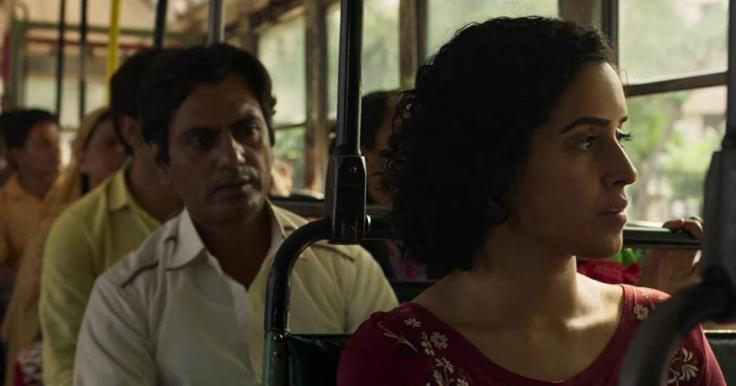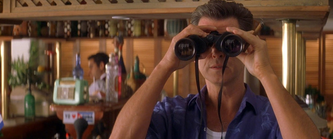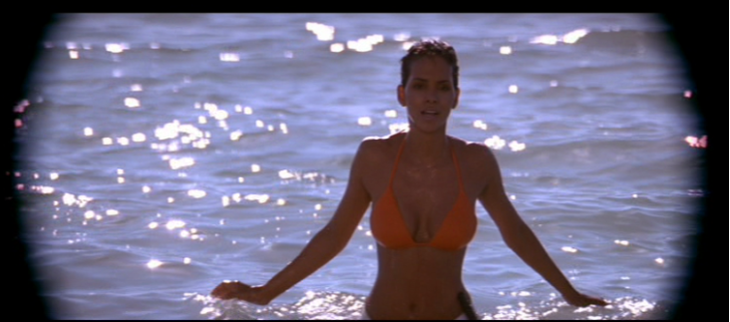At the London Film Festival 2019 I attended a talk by director Nina Menkes about the visual language of oppression. It was an explanation of the specific kinds of framing, lighting, visual effects and camera angles that tell us which characters are in charge, which have lower worth and what their relationships are to each other. She explained a number of these techniques and until a better name is proposed we’ll call it “The Menkes List”. It’s not a case of passing or failing a test if a certain number of boxes are ticked. Nor is it the case that any one of these techniques in isolation means that the film is good or bad for women. This is a tool which can hopefully help you better identify how women are portrayed on film. It’s also very important to note that this does not explore the intersections of race, sexuality, disability, age or any other element of identity; it is purely about techniques that impact all women in general. I have tried to explain them below but please follow Nina Menkes on social media @menkesfilm for further information. Point Of ViewWho is the subject and who is the object? Who is doing the looking and who is being looked at? When the audience is put in the male character’s shoes to observe a female character we are being asked to take his perspective and take on his feelings and actions as our own. The female character’s perspective is now the ‘other’. We become the male observer of the female. LightingIf you light someone from below then they can be presented to look scary. Lighting something from a 45 degree angle is widely accepted as the most aesthetically pleasing because you can see the contours, grooves and shadows. Lighting can add 3D depth and detail to a person or it can be flat and 2D, turning them into a painting. 2D lighting uses multiple angles of light to make a person look smoothed out and clean. No depth or detail. It also means they are not a part of their surroundings in the same way as someone with shadows, creases in their skin or beads of sweat. This kind of lighting creates a character that is there for aesthetic purposes but lacks depth and humanity. This is more easily noticeable if men in the same scene are being lit differently. Movement / Body PansThis is where the camera pans across a person’s body or tilts up it, taking in every aspect. The camera is the audience’s eyes so when it pans across someone’s body our eyes are examining it as an object not a human being. We’re lingering on it as something to be gazed at and absorbed. If someone did this to you in real life they would be leery and creepy. But if the film has already established a male character’s perspective we don’t have sympathy for the person being leered at. They are just an object to enjoy looking at. Remember Cameron Diaz‘s entry in The Mask? The camera slowly panned up her body. Disconnected From The SpaceAs with 3D lighting, if someone is physically grounded in the 3D space they inhabit they are a solid real character with the ability to affect the world around them. When a character is shown as disconnected from the space around them they become less of a real person in a specific time and place who might have power or influence on those surroundings. They become more abstract. A character could be disconnected from their space by showing them with little to no discernible background, at an angle, in fuzzy focus, as a hologram or as a semi-transparent reflection for example. For example, before the shower scene in Carrie was interrupted by the ‘horror’ of menstruation it showed a series of body parts being rubbed in slow motion through a steamy haze. Fragmented BodiesThis is one of the more noticeable ones. It is when only certain body parts are shown in the frame, disconnected from the rest of their bodies. When someone’s body is cut out of frame like this they become a series of parts rather than a whole. They’re not a fully formed human or a fully formed character. Each part becomes an object to be observed and admired in its own right. Slow MotionJust as a character might be disconnected from the 3D space around them, slow motion is a way of disconnecting a character from time. When they are cut off from real time they become more ethereal and there for the viewing rather than affecting their surroundings. It’s also a way of prolonging the amount of time the audience looks at their body, or of turning movements from something immediate into something sensual. The techniques discussed here are rarely used to show men’s bodies. If they are then it will be likely in order to show another form of power structure, for example relating to race. Or it will be for humour.
If a female protagonist falls foul of these techniques their authority is undermined. Their words and actions are eroded by how we’re being invited to view them. That’s why it’s not the case that a woman who saves the day has been treated well by a film. So, next time you spot any of these techniques ask yourself what they say about the women shown on screen and whether the same is true for the male characters. If not the film may have fallen foul of The Menkes List. Comments are closed.
|
AuthorHi, I'm Caz. I live in Edinburgh and I watch a lot of films. My reviews focus mainly on women in film - female directors or how women are represented on screen. Archives
December 2021
Categories
All
|



















 RSS Feed
RSS Feed
